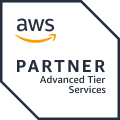For companies operating in the AWS ecosystem, the aim is to not just decrease spending, but also use their resources in a way that enhances their business objectives. Regardless, monitoring cloud costs is hard, similar to intricate puzzles where every turn taken may either take one closer to the goal or further away.
In this blog, we will explain ‘what is AWS FinOps’ in simple terms. We will discuss its meaning, operations, tools and resources necessary to implement it. We will cater to IT administrators, finance specialists and startup employees with actionable strategies that cut expenses and shift cloud spending into smarter investment territory.
What is FinOps?

FinOps is a relatively new term that revolves around the concept of a firm accepting and taking responsibility for its finances together as a team in the cloud ecosystem. Much like DevOps has an operational approach, FinOps encourages cross-functional collaboration, expenditure reduction, and insight-driven strategies to unleash the maximum number of finances onboarded to the cloud.
It ensures that every resource spent on the cloud aligns with overarching business objectives. All stakeholders, especially outside finance, such as IT and operations, are now encouraged to adopt cloud cost control mechanisms and work in silos.
Why is AWS FinOps Crucial in Cloud Financial Management?
FinOps brings AWS Cloud Services into alignment with overall corporate spending strategies in order to realize strategic goals. By not having proper cloud financial management in place, a company can suffer from:
Overspending on underutilized resources
Facing unexpected cost spikes
Missing opportunities for cost optimization
Why Choose AWS FinOps?
AWS FinOps offers a distinct and comprehensive capture of an organization’s cost control and optimization framework on the cloud, respecting the need for flexibility. Here’s why it stands out:
Rich Suite of Cost Management Tools: AWS does not stop at billing but offers supplementary services like Cost Explorer and Budget Alerts, and optimization through Trusted Advisor.
Scalable Solutions: AWS tools and services work for different organizational sizes, ranging from a small start up to an enterprise-grade corporation. Their infrastructure can accommodate varying cases and budgets.
Collaborative Opportunity: AWS FinOps brings financial transparency into operations, which encourages collaboration across all departments/teams for informed decision-making company-wide.
Cost Optimization: Avoid spending by having all your resources fully utilized, or with discount pricing schemas like Reserved Instances or Savings Plans.
Principles of AWS FinOps
To implement AWS FinOps in your company successfully, guiding yourself with these principles will help:
1. Collaborate Across Teams
FinOps enables collaboration across many functions, such as the engineering, finance, and operations teams, where each adds input towards the meeting of strategic and economic objectives. For example:
Engineering Teams focus on creating efficient solutions.
Finance Teams ensure cloud budgets are adhered to.
Operations Teams monitor and control the usage of cloud services.
2. Take Ownership of Cloud Usage
Every team that deploys a cloud resource must also manage its finances. AWS FinOps makes sure:
Resource rightsizing to minimize idle capacity.
Expenses of each cost center are tagged for cost allocation.
Responsibility increases visibility and allows teams to make economically responsible choices.
Common Challenges in Cloud Financial Management
Every cloud services technology comes with its challenges and AWS FinOps has a solution for each challenge:
Inefficient Resource Allocation: Resources are spent in a planned way, but they are either used ineffectively or not utilized at all, equating to unnecessary expenses.
Lack of Visibility: Your AWS invoice contains so many expenses that trying to make sense of the details can become stressful. With AWS FinOps, tools are provided that allow businesses to analyze their spending trends on a granular level, enabling more accurate forecasting.
Native AWS Tools for FinOps
Manage FinOps with the tools provided by AWS. There are several to support your strategy:
1. AWS Budgets

(Image Source: AWS)
Set proactive alerts for custom budget thresholds, such as spending or usage limits. AWS Budgets integrates with other services to automatically scale down resources while pausing non-essential services when budgets are exceeded.
Why it matters: It helps enforce financial discipline with real-time notifications and takes action to prevent budget overspending.
2. AWS Cost Explorer

(Image Source: AWS)
Explore Spending Capabilities on the AWS Cost Explorer and track the spending on your cloud. Earn savings by observing costs, identifying trends, and uncovering needs over time. With its forecasting feature, teams can also anticipate needed funding to achieve goals.
Why it matters: See where every dollar goes and plan smarter with data-driven forecasts.
3. AWS Cost and Usage Reports

(Image Source: AWS)
Get a granular view of your AWS spending and usage patterns. AWS Cost and Usage Reports provide all the necessary data to calculate cost drivers, which can be balanced with cloud strategy. This provides a means to detect inefficiencies and shift focus towards optimization.
Why it matters: Pinpoint inefficiencies and make informed decisions with actionable insights into cloud expenses.
4. AWS Compute Optimizer

(Image Source: AWS)
Simplify workload management. AWS Compute Optimizer assesses your historical usage data and makes recommendations on the most efficient instance types or sizes. This helps you achieve the best combination of performance and cost. It eliminates the overprovisioned resources nightmare.
Why it matters: You can save money and improve performance by scaling resources down to the actual demand levels.
5. AWS Trusted Advisor

(Image Source: AWS)
Think of it as your personal virtual consultant. AWS Trusted Advisor provides actionable insights to optimize cost, security, and performance. Use it to find idle resources, underused instances, and misconfigurations and utilize them to improve your setup.
Why it matters: A triaged, streamlined approach to cost management with unmatched expert-level reasoning baked into AWS.
6. AWS Cost Anomaly Detection

(Image Source: AWS)
Cutback on cost spillage with AI insights that detect unusual spending patterns before they go out of control. AWS Cost Anomaly Detection employs machine learning to identify such anomalies and send alerts, enabling teams to act in a timely manner.
Why it matters: Protect your budget with advanced warning and proactive cost management.
FinOps Best Practices for Cloud Financial Management
Cost-cutting in the cloud can be an integral part of a company’s success. Try these strategies to help you manage your cloud expenses better:
1. Regular Cost Reviews
Think of this like checking your bank account regularly. When spending is tracked, it becomes easier to identify straining unnecessary expenses and spending within the intended budget.
2. Automation for Cost Optimization
Repetitive tasks drain not just time but also have the potential to create errors due to fatigue. With automation, you can set tools to do tedious tasks such as automatically captioning resources or compiling expense reports. Such tools enhance precision and save time.
3. Rightsizing Resources
Think of it like using the right-sized backpack. If your backpack is too big or too small for what you carry, it's inconvenient. Similarly, cloud resources should match your workload. Regularly check if your computing power fits your needs and adjust as necessary.
4. Invest in Reserved Instances and Savings Plans
Cloud providers like AWS offer discounts (up to 70%) if you commit to using their services for a longer period. It’s like purchasing an annual bus pass and not individual bus tickets. When you plan ahead, everything becomes comparatively cheaper. Assess how your company leverages the cloud resources to determine which plan would suit you best.
5. Adopt a Cost-Awareness Culture
Think of this as teamwork. Each member of the company gets to understand the impact of their activities on cloud resource costs. Empower your staff, distribute cost reports, and promote cost-saving discussions so everyone collaboratively works to trim down expenses.
6. Explore Third-Party Tools for Advanced Optimization
Sometimes, additional support is required for the management of cloud services. Although AWS tools are efficient and serve their purpose well, some other tools, such as Pump, offer better functionality for individuals operating on various cloud platforms. These tools can find further potential for savings and cloud strategy optimization.
Why Additional Optimization Tools Are Worth Considering
AWS’s native tools are helpful, but they have certain limitations:
Look-back periods for data analysis are relatively short.
Reporting does not allow custom requests and is tailored to the users’ needs.
Initial setup, configuration, and maintenance are analytically easy but practically complex.
Third-party FinOps tools like Pump revolutionize cloud cost management. We help companies save 10-60% on AWS, GCP, or Azure bills through AI-driven optimizations, group buying power, and dynamic resource sharing. Through our AI, spend forecasting is done using past data, risk scores, and surveys. Based on those forecasts, Reserved Instances or Savings Plans are purchased to maximize discounts. If usage prediction is overly optimistic, resources become reallocatable to other customers and can be sold on the AWS marketplace. Otherwise, the client is credited AWS value.
Consolidated billing allows clients to share group discounts, immediate cost reductions, and savings on EC2 and S3 – pricing often unavailable for startups. Manually advanced Pump can be used in autopilot mode, free and easy to use, and works like having a cloud-savvy finance and DevOps on-call team.
Conclusion
AWS FinOps is more than just a set of tools; it’s a state of mind. With the right set of barebones frameworks paired with design tools that glue on a collaborative culture, organizations can shift their entire focus on using cloud expenditure towards company growth.
Here’s your action plan to get started:
Teach your staff about different FinOps concepts, such as transparency and reporting in real time.
Use inbuilt and outbuilt AWS applications, including Cost Explorer, Budgets, Trusted Advisor, and Pump.
Make it a point to regularly optimize resources and analyze usage metrics.
Research independent specialists for further flexibility and scalability.




